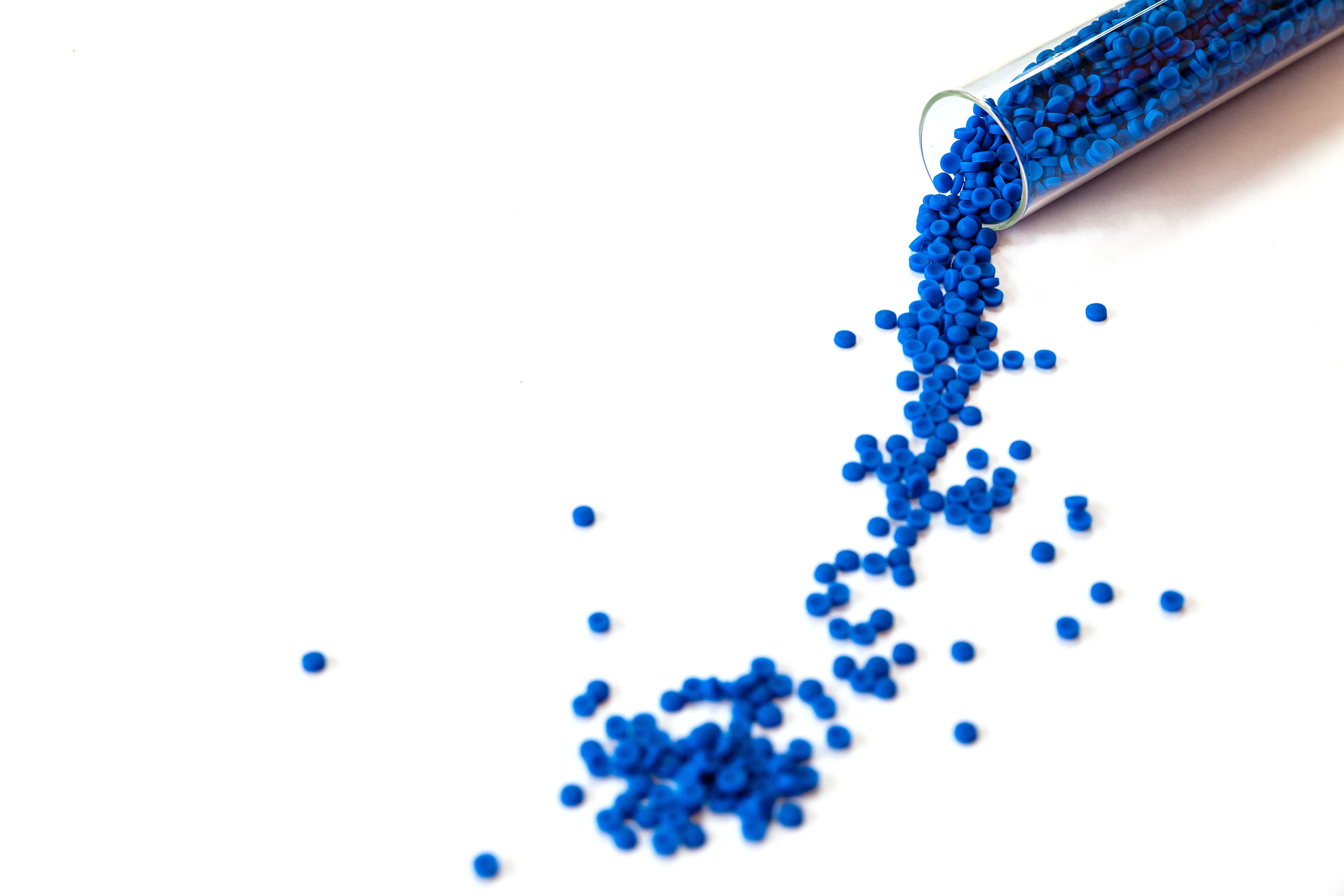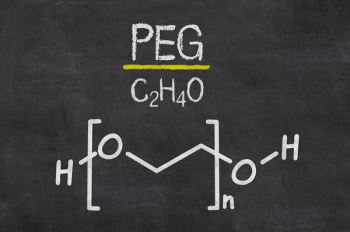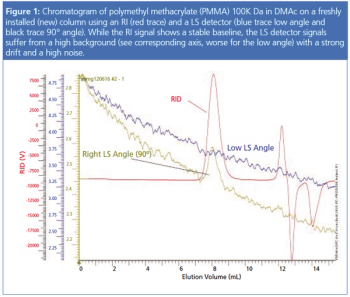The macroscopic properties of material based on poly(D,L-lactic-co-glycolic acid) (PLGA) polymers are tunable by molar mass distribution and degree of branching, enabling optimization for applications in the pharmaceutical and medical industries. Size-exclusion chromatography followed by online multi-angle light scattering with intrinsic viscosity detection (SEC–MALS–IV) is an advanced analytical method for determining absolute molar mass distributions, identifying polymer conformation and quantifying branching. SEC–MALS–IV overcomes the errors that can be encountered in molar mass determined by conventional SEC, which arise from chemical composition and molecular structure, and provides comprehensive characterization of PLGA to facilitate the targeted development of optimized polymer.






























